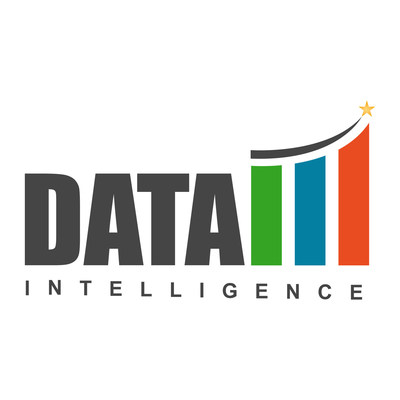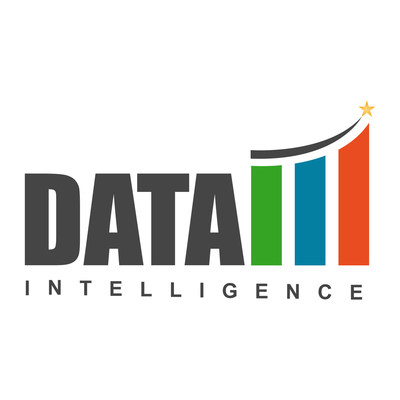
AUSTIN, Texas and TOKYO, Nov. 24, 2025 /PRNewswire/ — According to DataM Intelligence, the U.S. Software as a Medical Device (SaMD) Market Size reached USD 205.12 million in 2024 and is forecast to climb to USD 715.00 million by 2033, expanding at a strong CAGR of 13.5% during the forecast period 2025–2033. This rapid growth reflects a fundamental shift toward AI-powered clinical decision support, digital diagnostics, virtual care delivery, and algorithm-driven disease management solutions.
The Software as a Medical Device ecosystem-software intended for medical use without being integrated into a physical device-has gained momentum as healthcare systems undergo digital transformation. AI algorithms, mobile applications, data-driven diagnostics, predictive analytics, and continuous monitoring platforms are now central to U.S. healthcare delivery, fueled by increasing chronic disease burden, provider shortages, and demand for real-time, personalized care.
From AI-based triage tools to remote cardiac monitoring and digital diabetes management platforms, SaMD is reshaping the care continuum, improving patient outcomes, and strengthening clinical efficiency across hospitals, ambulatory centers, and home-care settings.
Download PDF Brochure: https://www.datamintelligence.com/download-sample/us-software-as-a-medical-device-market
Browse in-depth TOC on “US Software as a Medical Device Market”
65 – Tables
60 – Figures
196 – Pages
Market Overview: AI, FDA Guidance & Hospital Digitalization Drive Demand
The U.S. is one of the fastest-growing Software as a Medical Device markets globally due to several structural drivers:
- Clearer FDA regulatory pathways, including the Pre-Cert Program, 510(k) expansion, and clinical evaluation guidelines for AI/ML-based SaMD.
- Surging chronic disease cases, especially diabetes, cardiovascular diseases, mental health disorders, and oncology.
- Hospital automation & digital-first care, where AI triage, imaging analysis, and remote monitoring reduce clinician burden.
- Integration of SaMD with wearables, CGMs, ECG patches, biosensors, and smartphones, enabling continuous diagnostics.
- 35% increase in digital therapeutic use among U.S. payers, enhancing reimbursement traction.
- Shift toward predictive health, where SaMD platforms analyze physiological and behavioral data to prevent disease progression.
Market Segmentation Analysis
By Application (Disease Management, Diagnostics, Treatment Monitoring, Predictive Health Analytics, Others)
Disease Management
Disease management was the largest application area in 2024, contributing nearly 38% of market revenue, or approximately USD 78 million. SaMD platforms are now widely used for diabetes management, mental health support, COPD monitoring, and cardiovascular risk reduction. AI-driven behavioral coaching, glucose trend analysis, and symptom tracking are core capabilities enabling personalized interventions and reducing hospitalizations.
Diagnostics
Diagnostics accounted for 29% of the market, valued at USD 59 million. AI-based imaging analytics, digital pathology platforms, ophthalmology screening tools, and virtual ECG diagnostic engines are gaining strong adoption among U.S. hospitals. FDA-cleared AI diagnostic tools, especially in stroke detection (e.g., Viz.ai), have become critical for reducing time-to-treatment and improving outcomes.
Treatment Monitoring
Treatment monitoring represented 20% of the market value (USD 41 million). SaMD platforms track medication adherence, vitals, wound recovery, therapy response, and patient-reported outcomes. Oncology treatment monitoring systems and heart failure progression trackers are expanding rapidly due to increasing value-based care initiatives.
Predictive Health Analytics
Predictive health analytics accounted for 10% (USD 20 million). These platforms analyze physiological datasets, lifestyle patterns, and biomarker trends to predict exacerbations, support preventive care, and optimize patient triage. Adoption is expected to grow significantly as insurers increasingly reimburse preventive digital health tools.
By Indication (Diabetes, Mental Health, Oncology, Cardiovascular, Respiratory Conditions, Others)
Diabetes
Diabetes was the leading indication in 2024, accounting for 32% of SaMD demand, equal to USD 65 million. Integration between SaMD and continuous glucose monitors (CGMs), insulin pens, and insulin pumps continues to drive adoption, especially among Type I and insulin-dependent Type II patients. AI-supported glycemic prediction algorithms saw double-digit growth across U.S. clinics.
Mental Health
Mental health applications contributed 22% (USD 45 million). Digital therapeutics for depression, anxiety, and behavioral health management are increasingly prescribed by clinicians, supported by strong payer engagement and rising mental health awareness nationwide.
Cardiovascular Diseases
Cardiovascular indications accounted for 19% (USD 39 million). SaMD platforms detecting atrial fibrillation, monitoring arrhythmias, and predicting cardiac events have seen rapid uptake, driven by rising heart disease prevalence and integration with ECG wearables.
Oncology
Oncology-focused Software as a medical device systems represented 14% (USD 29 million). Digital tumor progression trackers, AI-driven radiology engines, and symptom-monitoring apps help oncologists adjust treatment plans proactively and improve the quality of life for cancer patients.
Respiratory Conditions
Respiratory conditions contributed 9% (USD 18 million). Software as a Medical Device tools for COPD monitoring, asthma management, and sleep disorder detection are expanding rapidly due to the increasing prevalence of chronic lung diseases.
Buy This Report with Year-End Offer (Buy 1 report: Get 30% OFF | Buy 2 reports: Get 50% OFF each! Limited time offer): https://www.datamintelligence.com/buy-now-page?report=us-software-as-a-medical-device-market
U.S. Market Trends: Regulatory Advancements & Hospital Digitization Accelerate Adoption
The U.S. Software as a Medical Device landscape benefited from strong regulatory and commercial developments in the past year:
- The FDA’s updated AI/ML SaMD Action Plan increased transparency and accelerated clearance review cycles.
- Hospitals increased AI diagnostic deployment by 27% YoY, especially for imaging and emergency care.
- Mental-health SaMD prescriptions grew 34% YoY, driven by high post-pandemic demand.
- SaMD integrated with wearable devices recorded 41% adoption growth across primary care settings.
- U.S. health insurers expanded coverage for digital diabetes and cardiac monitoring programs, improving patient access.
- Nearly 65% of U.S. health systems now use at least one FDA-cleared AI medical software tool.
Competitive Landscape: Key Innovators Driving Software as a Medical Device Growth
The market includes AI-health tech leaders, digital therapeutic developers, remote monitoring companies, and global medical device manufacturers advancing regulated medical software.
Key Market Players Include:
- Viz.ai, Inc. – Leader in AI stroke detection & imaging-based emergency diagnostics
- Medtronic Plc – Strong portfolio of cardiac monitoring & diabetes software solutions
- AliveCor – Pioneer in FDA-cleared mobile ECG diagnostics
- Empatica – Known for seizure detection & wearable-integrated SaMD platforms
- Bigfoot Biomedical – Integrated diabetes insulin decision-support systems
- Digital Diagnostics Inc. – Leading AI diagnostic company for ophthalmology
- Imagen – AI-powered radiology diagnostics
- Orthogonal – Specialized SaMD development & compliance engineering
Request for Customized Sample Report as per Your Business Requirement: https://www.datamintelligence.com/customize/us-software-as-a-medical-device-market
Future Outlook: Software as a Medical Device Will Become the Backbone of Digital-First Healthcare in the U.S.
By 2033, the Software as a Medical Device Market will evolve toward:
- AI-first clinical decision support systems integrated across all specialties
- Predictive-care engines that anticipate disease exacerbations before symptoms occur
- Digital therapeutic-centric care models for chronic disease management
- Greater integration with implantable and wearable medical devices
- Remote hospital-at-home models supported by Software as a Medical Device platforms
- Dynamic regulatory pathways for self-evolving AI algorithms
- Enterprise-wide SaMD interoperability across EHRs and payer systems
Related Report:
- Medical Device Contract Manufacturing Market Size to Surge from US$76.4 B in 2024 to US$190.9 B by 2033 – 10.9% CAGR.
- Medical Device Outsourcing Market Size to Surge from US$127 B in 2023 to US$341 B by 2031 at 13.1% CAGR.
About DataM Intelligence
DataM Intelligence is a renowned provider of market research, delivering deep insights through pricing analysis, market share breakdowns, and competitive intelligence. The company specializes in strategic reports that guide businesses in high-growth sectors such as nutraceuticals and AI-driven health innovations.
To find out more, visit https://www.datamintelligence.com/ or follow us on Twitter, LinkedIn, and Facebook.
Contact:
Sai Kiran
DataM Intelligence 4market Research LLP
Ground floor, DSL Abacus IT Park, Industrial Development Area
Uppal, Hyderabad, Telangana 500039
USA: +1 877-441-4866
Email: [email protected]
Logo – https://mma.prnewswire.com/media/1858619/5640183/DataM_Intelligence_Logo.jpg
View original content to download multimedia:https://www.prnewswire.com/news-releases/us-software-as-a-medical-device-market-to-reach-usd-715-million-by-2033-as-ai-driven-diagnostics-and-digital-therapeutics-accelerate-adoption-302624824.html
SOURCE DataM Intelligence 4 Market Research LLP



